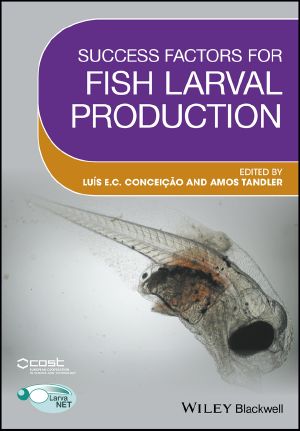Success Factors for Fish Larval Production, First Edition

- Authors
- Luis Conceicao,Amos Tandler & Tandler, Amos
- Publisher
- Wiley-Blackwell
- Date
- 2017-08-29T00:00:00+00:00
- Size
- 6.92 MB
- Lang
- en
The successful production of good quality larvae is a vital element for the success and commercial stability of the fish farming industry.
This important new book reviews our current understanding of larval biology, including how external (environmental and nutritional) and internal (molecular/ developmental/ physiological/ behavioral/ genetic) factors interact in defining the phenotype and quality of fish larvae and juveniles.
The detailed coverage within Fish Larval Production includes broodstock genetics and husbandry, water quality, larval nutrition and feeding, growth physiology, health, metamorphosis, underlying molecular mechanisms for development, larval behavior and environmental conditions. The book also discusses the research needs and the available tools to:
- improve egg quality and larval production via broodstock management and nutrition
- control the phenotype of juveniles and table-size fish via manipulations of the conditions of larval rearing (phenotypic plasticity);
- reduce high mortality in fish larvae
- control the growth rate independent of a larval batch
- overcome the limited digestive capacity in first feeding larvae
- optimize diet composition, formulation and technology
- minimize skeletal abnormalities
- improve disease and stress resistance in fish larvae.
Fish Larval Production also reviews research and commercially applicable larval quality indicators and predictors, including their integration into IT-based prediction matrices.
Fish Larval Production will be of great use and interest to fish biologists, developmental biologists, physiologists and zoologists. All those working in fish aquaculture facilities and hatcheries will find much of great interest and commercial use within this book. All libraries in universities and research establishments where biological sciences, aquaculture and fisheries are studied and taught should have copies of this book on their shelves.